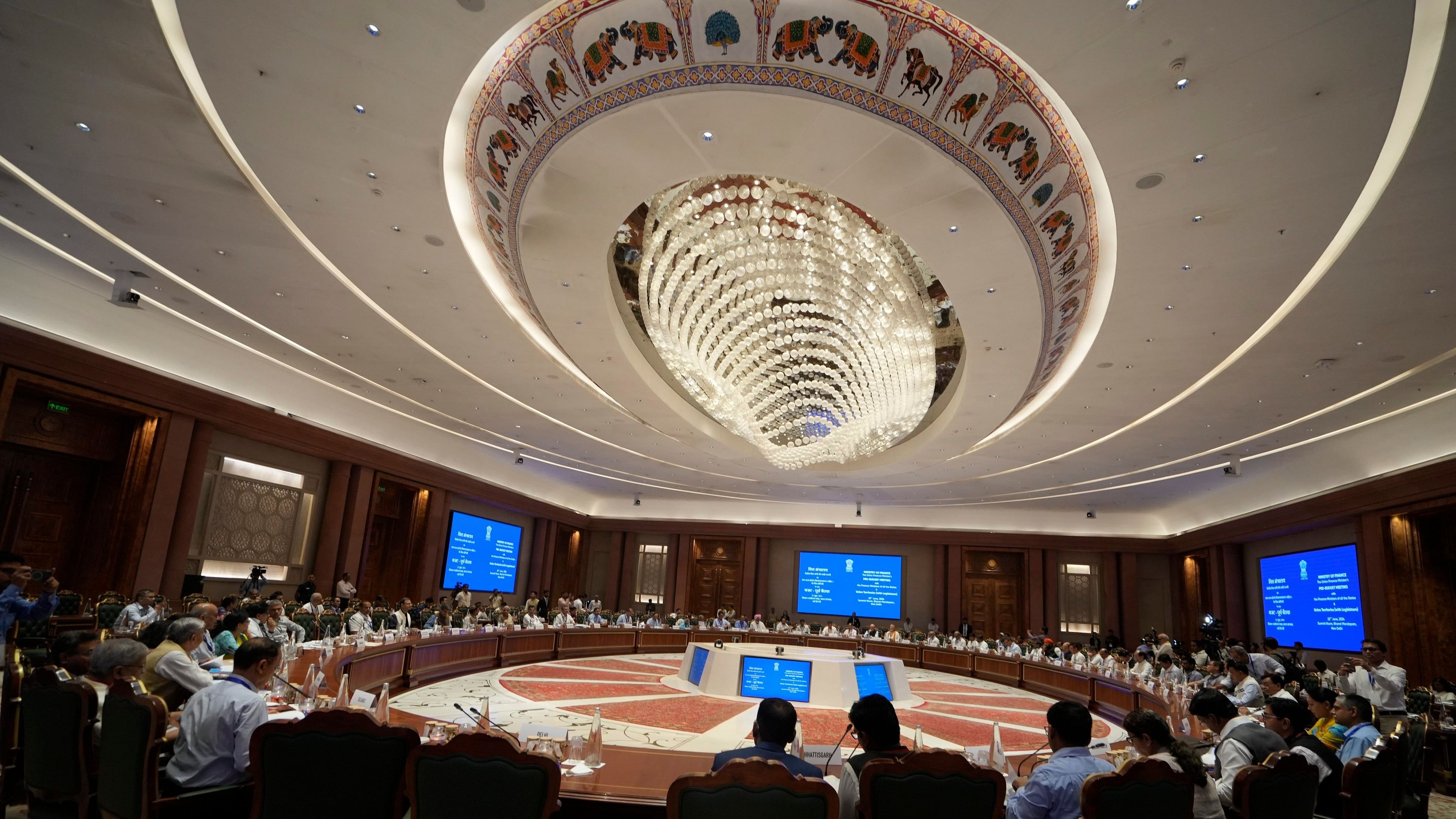
FM Sitharaman chaired the pre-Budget meeting with finance ministers of all the States and Union Territories (with Legislature) on Saturday in New Delhi.
Credit: PTI Photo
Bengaluru: As the Finance Ministry prepares the upcoming Union budget 2024, it finds itself with enough fiscal space to bring a long-awaited tax relief to the salaried classes, as well as continue down the path of focus on public infrastructure and rural-focused welfare schemes.
Thanks to the Reserve Bank of India’s Rs 2.11 lakh crore record dividend to the union government, Finance Minister Nirmala Sitharaman may be able to increase allocations for the Centre’s capital expenditure and well as outlay on flagship programmes compared to the interim budget, DH has learnt.
In order to enable all this, however, the fiscal deficit target of 5.1 per cent of GDP set in the interim budget is likely to remain untouched. Fiscal deficit is the difference between a government’s revenue and expenditure when the latter is higher, and is an important indicator of the administration’s financial health.
Sitharaman is likely to present the Union Budget 2024 in the third week of July.
“The RBI windfall provides enough breathing room for a budget which could please salaried classes, farmers, investors, corporates and markets,” said a senior government official aware of the pre-budget deliberations.
While the modalities are still being discussed by the top policymakers in the central government, tax sops for the middle class could be in the form of either raising the basic exemption limit to Rs 5 lakh from Rs 3 lakh, or rejigging the tax brackets.
The benefits are likely to be for those opting for the new personal income tax scheme over the old one.
That apart, Sitharaman had also promised in the interim budget that the Narendra Modi government will launch a housing scheme for the ‘deserving sections’ of the middle class, which is expected to be announced in the upcoming budget.
Tax relief for the salaried classes has also been sought by India Inc, in their pre-budget meetings with Sitharaman and her top bureaucrats and advisors.
Corporate India representatives have also sought that the focus on capital expenditure be continued, along with the expansion of production-linked incentive scheme.
“The sectors where we are expecting an increase in populist spending are towards rural schemes and some kind of income tax rationalisation for the lower income strata. Affordable housing could see some push and I do expect some kind of cash transfer,” Tanvee Gupta Jain, Chief India Economist at UBS Securities India, had told DH in an interview earlier this month.
Infra, welfare thrust likely to continue
In the interim budget, the centre’s capital (or infrastructure) spending target was a record Rs 11.11 lakh crore, and that could be increased, given that Sitharaman has the breathing space to do so.
Since the Covid-19 pandemic, the Modi government has believed that focus on big ticket infrastructure projects with high multiplier effect is the most sure-shot way to create jobs, increase activity in the economy, and spur growth.
However, the biggest boost in terms of allocations, in the upcoming budget, is expected to be for the rural sector, as in spite of high overall growth figures, household consumption in the economy remains subdued.
Allocations for the flagship PM Kisan and Pradhan Mantri Awas Yojana (both rural and urban) are expected to be increased from the interim budget. PM Kisan’s outlay for the current financial year (2024-25) stands at Rs 60,000 crore, while that of Awas Yojana stands at Rs 80,671 crore.
In its first decision since the formation of the new government, Prime Minister Modi’s cabinet has approved the construction of 3 crore houses under PMAY, with 2 crore planned under the rural component, and 1 crore houses for urban areas.
There is also a political reason for the government to present a feel-good budget. Soon after taking charge the Modi administration has been hit by a major train accident and the ongoing entrance examination fiasco, thus making it imperative that the budget aims to please all stakeholders.